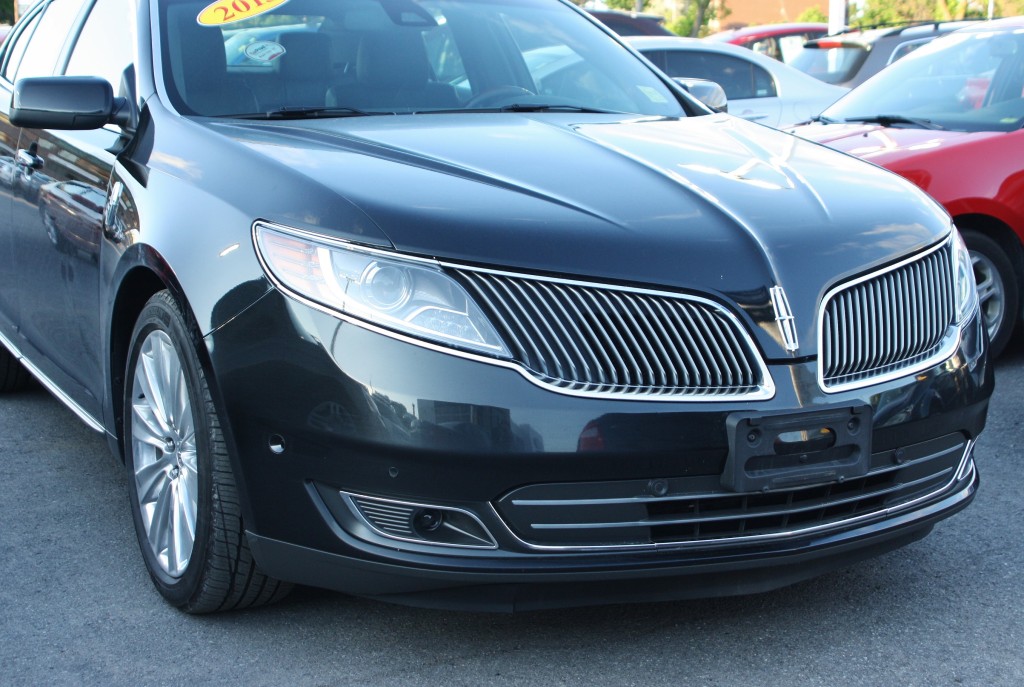Automotive columnist John Phillips has an interesting piece in the July edition of Car and Driver.
In it, Phillips describes the Lincoln Motor Company as being devoid of direction and purpose – an automaker undecided as to what it wants to be in the automotive landscape. Lincoln’s badge-engineered lineup (essentially, luxury re-treads of Ford vehicles), are a “distracting abstraction,” Phillips argues, existing solely as a second sales stream for Ford.
This kind of speculation is nothing new, as Lincoln has been drifting like a ship without a rudder for some time, but it’s still worthwhile. Lincoln is a storied nameplate that has become almost invisible, and deserves to return to prominence.
While traditional rival Cadillac now boasts an appealing lineup of aggressively styled vehicles that knows who their competition is, Lincoln’s offerings lack an overall design philosophy.
Judged on their own merits, each vehicle in Lincoln’s lineup has things to like about it, but there’s no denying they’re simply ‘Fords…with luxury’. Luxury, and an odd grille.
I know the retro waterfall thing is supposed to emulate the face of the classic 1940 Continental, but it always looked like a beached whale to me. The MKS is nice but forgettable, the MKT is a bizarre land boat that’s rarer than a Toronto Conservative, the MKX seems to be a top trim level for the Ford Edge, and the MKZ – the most visible new Lincoln – boasts a no-cost Ford Fusion hybrid drivetrain as its centrepiece along with ‘different’ styling.
Phillips argues that Lincoln needs to do something completely new – something that’s distinctly a product of Lincoln, and not Ford – in order to emerge from automotive purgatory.
I don’t see why this isn’t possible. Ford is making money, and I’m sure it would like to make Lincolns that generate large sales (and buzz). In the 60s and 70s, Lincoln was a powerhouse, selling luxury coupes and massive formal sedans like they were going out of style (and they were).
In the 1980s, Lincoln held its own over Cadillac precisely because they hadn’t gone on the badge-engineering ride that GM had entered Cadillac into.
(See clip for evidence that Lincoln played up this angle, advertising its “uncompromised individuality.”)
Things started to fall apart in the 1990s after the Mk VIII was put out to pasture and the front-drive Continental started withering on the vine, leaving the Town Car as the remaining ‘classic’ Lincoln.
The rear-drive Lincoln LS (2000-2006) that followed earned some impressive accolades, but is now as remembered as the Cadillac Catera of the same era – ie, not at all. Badge engineering began in earnest in the LS’s wake, with the introduction of the Fusion-based Zephyr in 2006.
The Zephyr thudded into the marketplace with lacklustre sales, forcing the Ford Motor Company to almost immediately rebrand it as the MKZ (while also giving it an engine upgrade and grille redesign).
The rest is history.
I’m sure Lincoln will one day find the direction it needs, but what direction that will be escapes me. I know many car enthusiasts still wish for a modern, rear-drive incarnation of the Continental (with suicide doors, no less!), but Cadillac’s newfound hotness didn’t come from re-hashing the deVilles and Fleetwoods of years past.
On its own, the new MKC small crossover is fairly attractive, with a duo of interesting turbo fours. However – call me a traditionalist – Lincoln needs to be primarily about sedans. We will watch.

